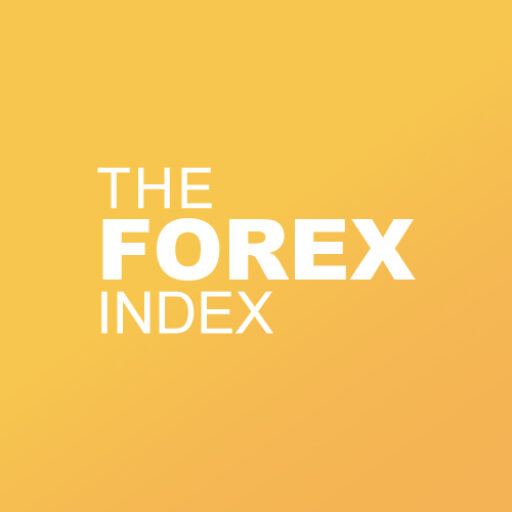In the fast-paced world of economics, understanding the factors that drive market trends is crucial for making informed decisions. One valuable tool used by analysts and investors alike is the Beige Book. This comprehensive report provides insights into the state of the economy and serves as a reliable guide for understanding economic trends. In this article, we will decode the Beige Book, explore its latest findings, and shed light on its importance in gaining invaluable economic insights.
Understanding the Beige Book: Insights into the Economy
What exactly is the Beige Book and why does it matter? Published eight times a year by the Federal Reserve System, the Beige Book is a collection of economic reports from various Federal Reserve Banks across the United States. It gathers information from businesses, industry contacts, and economic experts to provide a comprehensive snapshot of the current state of the economy.
The Beige Book compiles data on different sectors, such as manufacturing, services, and real estate, and provides an in-depth analysis of the economic conditions in individual Federal Reserve districts. By examining data from various sources, the Beige Book allows economists and investors to identify emerging trends, gauge the overall health of the economy, and make informed predictions about future market movements.
The Beige Book is a powerful tool for understanding the economy because it provides a detailed and diverse picture of economic activity across different regions and industries. This comprehensive report allows for a more nuanced understanding of the current economic landscape compared to other traditional economic indicators.
One significant advantage of the Beige Book is that it provides qualitative information in addition to quantitative data. While traditional economic indicators such as GDP growth rates and employment figures reveal important quantitative information, the Beige Book offers qualitative insights. These insights provide a deeper understanding of the factors driving economic activity, such as consumer sentiment, supply chain disruptions, and changing market dynamics.
Now that we understand the importance of the Beige Book, let’s delve into its latest findings. The most recent edition of the Beige Book highlights several notable trends and developments in the US economy.
- Job Market: The Beige Book shows that the job market continues to recover, albeit at a slower pace than expected. Businesses reported difficulties in finding qualified workers, leading to wage pressures in some sectors.
- Inflation: Concerns about inflation are prominently featured in the latest Beige Book. Rising prices, particularly in industries like construction and manufacturing, are impacting profitability and leading to higher costs for consumers.
- Housing Market: The housing market remains robust, with strong demand and rising prices. However, supply constraints are hindering the market’s full potential.
- Consumer Spending: The Beige Book highlights strong consumer spending, driven by pent-up demand and fiscal stimulus measures. However, rising prices and supply chain disruptions are dampening consumer sentiment.
By analyzing these key findings, economists and investors can gain insights into the current state of the US economy and make more informed decisions.
Furthermore, the Beige Book provides valuable information on regional economic disparities. It allows policymakers to understand the unique challenges faced by different regions and tailor their policies accordingly. For example, if the Beige Book reveals that a particular region is experiencing a decline in manufacturing activity, policymakers can implement measures to support that sector and stimulate economic growth.
Additionally, the Beige Book serves as a barometer for assessing the effectiveness of monetary policy. By monitoring the impact of interest rate changes and other policy decisions on various sectors of the economy, the Federal Reserve can fine-tune its strategies to achieve its dual mandate of price stability and maximum employment.
Moreover, the Beige Book plays a crucial role in shaping market expectations. Investors closely analyze the report to gain insights into the future direction of the economy. If the Beige Book indicates strong economic growth, investors may become more optimistic and increase their investments. Conversely, if the report reveals signs of weakness, investors may adopt a more cautious approach.
Overall, the Beige Book is an invaluable resource for policymakers, economists, and investors alike. Its comprehensive and detailed analysis of the economy provides a deeper understanding of the current economic landscape and helps inform decision-making at various levels.
Unraveling the Factors Affecting Prices in China
As an increasingly significant global economic powerhouse, China’s market trends have far-reaching implications for the world economy. Understanding the factors influencing prices in China is crucial for investors and businesses alike. Let’s explore the dynamics of China’s price trends and the factors contributing to price fluctuations.
Exploring the Dynamics of China’s Price Trends
China’s price trends are influenced by a variety of factors, including both domestic and international forces. Rapid urbanization, industrialization, and a growing middle class are contributing to increased consumer demand. This surge in demand, coupled with supply constraints and production costs, has led to price fluctuations in various sectors.
Among the key drivers of price trends in China is the country’s extensive manufacturing sector. China’s position as the world’s manufacturing hub means that changes in production costs, such as raw material prices and labor costs, can significantly impact prices of finished goods both domestically and globally.
Factors Influencing Price Fluctuations in the Chinese Market
Understanding the factors influencing price fluctuations in the Chinese market is crucial for businesses and investors seeking to navigate this complex landscape. Several key factors play a role in shaping China’s price trends:
- Supply and Demand Dynamics: Shifts in supply and demand can have a significant impact on prices. Changes in consumer preferences, government policies, and economic conditions can all influence supply and demand dynamics.
- Government Policies: Government policies, such as regulations, tax incentives, and tariffs, can directly impact prices in China. Changes in government policies can lead to price fluctuations, especially in industries facing tighter regulations or facing trade barriers.
- Market Competition: Competition among businesses within China’s vast market can drive price fluctuations. Price wars, technological advancements, and changing consumer behavior can all influence market competition and subsequent price movements.
By understanding these factors and closely monitoring China’s price trends, businesses and investors can make informed decisions and adapt their strategies to navigate this dynamic market effectively.
Understanding the Impact of Supply and Demand on Prices in China
Supply and demand dynamics play a critical role in shaping prices in China. Understanding these dynamics is pivotal for businesses and investors seeking to gauge market trends and make informed decisions.
In recent years, China’s growing middle class and rapid urbanization have driven a surge in consumer demand. This increased demand, coupled with limited supply in certain industries, has led to price increases. Conversely, during periods of economic downturn or reduced consumer spending, demand may decline, leading to price decreases.
Supply constraints can also impact prices in China. Factors such as resource availability, international trade relationships, and production capacity can all influence the supply of goods and services. Any disruption to the supply chain, whether due to natural disasters, political tensions, or logistical challenges, can lead to price fluctuations.
Moreover, it is crucial to recognize that supply and demand dynamics are not isolated to the domestic market. China’s role as a global trade powerhouse means that international supply and demand factors can also influence prices in China. Shocks to global markets or changes in international trade policies can have ripple effects on China’s pricing landscape.
Conclusion
In conclusion, understanding the Beige Book and the factors shaping prices in China are essential tools for gaining economic insights. The Beige Book offers a comprehensive view of the economy, providing qualitative information that complements traditional economic indicators. By analyzing the Beige Book’s latest findings, economists and investors can identify emerging trends and make informed predictions.
Similarly, recognizing the factors influencing prices in China enables businesses and investors to navigate this dynamic market successfully. China’s price trends are impacted by a multitude of factors, including supply and demand dynamics, government policies, and market competition. By closely monitoring these factors, stakeholders can make informed decisions and position themselves for success in this economically significant market.
Ultimately, staying informed and understanding these economic drivers allows us to make more informed decisions in an increasingly complex and interconnected global economy.






